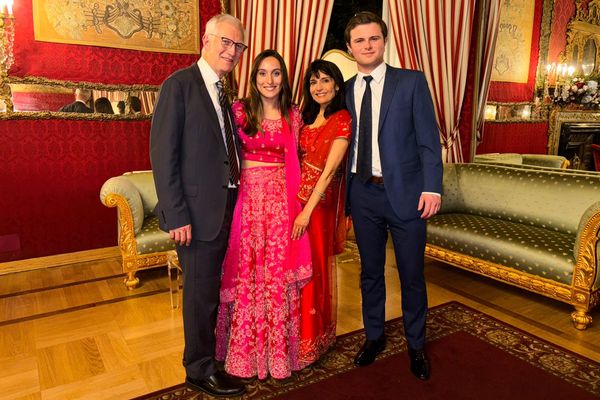
Jamie Chadwick has already rewritten the rulebook for women in motorsport: she’s a three-time W Series champion, the first woman to win an Indy NXT road course race, a member of the Williams F1 team, and now, a victorious LMP2 driver. However, her impact extends well beyond the top step of the podium - she’s a sharp TV pundit, a Rolex testimonee, and the owner of a karting series for young girls. Chadwick doesn’t just want to win, she wants to understand why the playing field isn’t yet level for women, and help fix it. We caught up with the 26-year-old Brit at the Rolex 24, shortly before her phenomenal ELMS debut performance, to talk about what’s next.

You’re gearing up for a big year of endurance racing. How are you feeling about the challenge?
I've done three endurance races, all quite early in my career. I went straight from junior car racing into sports cars and haven't done anything since then! I’m actually quite worried about Le Mans because I love my sleep, but I'm hoping the adrenaline helps.
Has your Indy NXT win recalibrated your expectations for yourself moving forward?
I don't know if you're meant to admit this, but you always think, ‘Oh, I can win,’ and convince yourself that you can win in any situation. But the reality is, you never think like that. I had a really tough first year [in Indy NXT] so I knew we were going to be more competitive in the second year. Going into that weekend [the 2024 Road America] I was like, ‘I’ll be quite happy with a top five, top 10,’ and then you come out of it, and you're like, ‘Okay, actually, my expectations are reset.’ What it showed me was that people sometimes think you have to be there immediately, and if you're not, then you're not going to develop and improve. But knowing I was able to do that gave me so much confidence for whatever I do in the future. If you work hard and put the time in, I think anyone can develop.
Drivers seem to be getting younger and younger - do you find there’s less time given for development in motorsport?
Absolutely. In America it's a bit better and they seem more patient; age is never really spoken about. They get excited by young drivers, but it's less of a focus. I was one of the older Indy NXT drivers and it wasn’t ever a talking point, it just was what it was. In sport, generally, you can afford to be patient — but in motorsport, it's not always given.

That seems to be exemplified by the fact F1 teams are scouting drivers as young as 10. Is the pressure to secure the ‘next big thing’ changing how talent is nurtured?
It’s a big part of the future of the sport - trying to find younger talent and support them from the grassroots level. Otherwise, young drivers have to find their own way, which is tough for anyone. F1 is now such a high level that everyone wants the next best thing and to have ownership of it. The investment for an F1 team to put into a 10-year-old and support them all the way through - if it pays off, it's worth every penny. Otherwise, teams can end up in situations where they don't have a driver in their roster that they've nurtured.
How does your karting series - the Jamie Chadwick Series - fit into this system?
The karting series I started is really about participation. It's not trying to find a future superstar. Participation has been up 1900%, which is wild, but that percentage feels big because we started with such a low number. Talent scouting is something I also want to do. It would be great if we could identify those with potential early on and tap into that rather than waiting until female drivers are 20 years old and only then trying to develop them.
Are F1 scouts genuinely starting to look at young female drivers?
It's becoming a big thing - especially now with the F1 Academy. Everyone is secretly kind of desperate to find a future female superstar. But it's still tricky, because there's such a low level of participation that it's tough to really find someone. We’re now seeing F1 representatives go to kart tracks, and we haven’t heard stories like that since Lewis Hamilton. So it’s quite a cool place for the sport to be in.

Coming back to endurance racing, are there any unique skills you need for this kind of competition?
The big one is compromise. You're always going to have to compromise with two other drivers and you just have to get on with it. You're never going to drive the same car twice. The luxury in single-seaters is the car is perfectly balanced for you — every time you get in, it should be the same. In this instance, you get in and the car's done 24 hours so on one stint, the brakes feel great. The next stint, they feel terrible. Then the tires are bad. It’s constantly different. You have to adapt and make no mistakes, but what we see [towards the end] is fatigue starts to set in, and even some of the best make little mistakes. The good thing is, when you come from single seaters where all the focus is on you, you’ve been developed quite heavily. So when you go into something else, you should be quite well prepped for whatever comes next.
Is there a skill you’ve developed over time that you’re most proud of?
The ability to learn. A lot of people say that in sport, your development curve reaches a plateau. For me, it feels like the opposite and I can continuously improve. Maybe it's because I didn't come from a racing background and my foundations weren’t as strong as they could’ve been, because now I feel like I'm developing.
Have you started thinking about Le Mans?
I've spent quite a lot of time with the [Genesis Magma Racing] team. You start talking about the first couple of races of the season, and then it quickly moves into Le Mans. It's a very different challenge and there are so many new things — I don't want to get caught out not knowing rules. It's also a long week, similar to here [Daytona], and managing energy and fatigue is a big part of it. The more I know going in, the better.

Do you have any pre-race rituals?
When I was younger, I used to get so stressed. I'd panic in the morning if I couldn’t find my pass or anything like that, and it transferred into my driving. Then I did a championship called the MRF Challenge, which was five races in the Middle East and India across one weekend. You’re constantly in the car and can’t afford to be stressed about little things so I had no ritual. I just got in the car as if it was a test day, and it was the best I’ve ever competed. Then I went to the other extreme and I was asleep before getting in the car. That was too relaxed! Now, I’ve found a happy medium.
We’re here in Daytona approaching the final hours of the Rolex 24. What is it about this race that makes it such a coveted event for drivers?
I think it's the watch! It's also such an honor and something to be proud of. This race has got a lot of rich history and has become so competitive. Because of the time of year, a lot of drivers can come from different disciplines and it’s become the race everyone wants to be at. We've got IndyCar drivers, NASCAR drivers, Formula E drivers — even F1 drivers. There have been years where F1 drivers have done both, and Lando Norris raced before he was even in F1. It’s very special.







